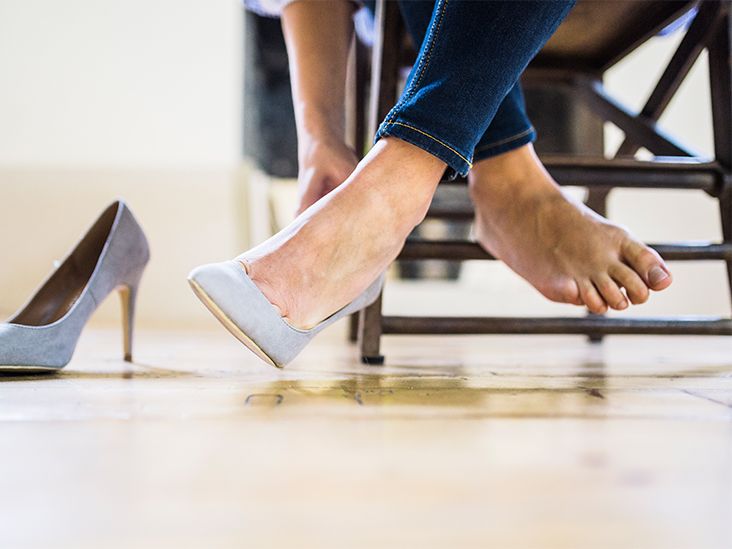
Shoe Width: A Key Factor for Healthy Feet
Your feet carry you through thousands of steps each day, making it essential to select shoes that fit correctly. While shoe length is often the primary focus, the width of your shoes plays a crucial role in overall foot health. Wearing shoes that are too narrow can lead to various foot problems and discomfort throughout your body. Let’s explore why shoe width is significant and how to ensure you’re wearing the right fit.
Understanding Shoe Width Sizing
Shoe width is typically measured around the forefoot, which is the widest part of your foot. In the U.S., shoe widths range from narrowest to widest as follows: AAA, AA, A, B, C, D, E, EE, and EEE. It’s important to note that not all brands offer various widths, which can complicate the search for the right size.
For women, the medium width is generally categorized as B, while for men, it is D. When purchasing shoes, you’ll often see a letter next to your numerical size, indicating the width. The majority of shoes available in stores are medium width.
How to Find the Right Shoe Width
Research indicates that between 63% to 72% of people wear shoes that do not fit correctly. To avoid discomfort and foot-related issues, consider these tips when searching for shoes:
- Measure Your Feet Regularly: Your feet change over time, so have them measured each time you shop for shoes. Use a soft tape measure around the widest part of your foot while standing flat.
- Measure at the End of the Day: Feet tend to swell throughout the day. Measuring when your feet are at their largest will help you select the most appropriate width.
- Fit for Your Wider Foot: Most individuals have one foot that’s larger. Measure both feet and base your purchase on the size of the wider foot.
- Consider Size Variability: Keep in mind that sizes vary between brands and styles; an 8B in one brand may not fit the same in another.
- No Need to "Break In": Shoes should feel comfortable from the start. If they don’t fit well initially, they won’t get better with wear.
- Walk Test: Always stand and walk around while trying on shoes to see how they fit under weight.
Foot Problems Linked to Incorrect Shoe Width
Shoes that are too tight can lead to several foot issues, which may become permanent if untreated. Here are some common problems:
Corns and Calluses
Developed due to pressure and friction from tight footwear, corns and calluses are thickened areas of skin on your feet. Corns are typically small, round spots on toes, while calluses are larger and occur on the soles. Though they serve as protective responses, they can be painful.
Ingrown Toenails
An ingrown toenail occurs when the toenail grows into the surrounding skin, often leading to pain, swelling, and a risk of infection. Tight shoes are a common trigger for this condition.
Bunions
Bunions are bony protrusions at the joint of your big toe, frequently caused by wearing constrictive shoes. They may result in significant pain and discomfort.
Hammer Toe
This condition causes the toes to bend at the joint, often resulting in pressure against the shoe. Frequently, it accompanies other issues like corns or calluses, and may require medical intervention if left untreated.
Natural Remedies for Common Foot Issues
While some foot problems may necessitate surgical intervention, several home remedies can alleviate discomfort:
- Change Your Footwear: Invest in shoes that accommodate your foot width without squeezing or rubbing.
- Cold Compress: Use a cold compress to reduce swelling and pain; apply it for 15 to 20 minutes several times a day.
- Epsom Salt Soaks: A warm soak with Epsom salts can help soothe sore muscles and relieve swelling.
- Massage: Massaging your feet can ease soreness and improve blood circulation.
- OTC Pain Relief: Over-the-counter anti-inflammatory medications can help alleviate pain associated with tight shoes.
- Cushioned Pads: Use corn and callus pads or insoles for extra comfort and support in your shoes.
- Pumice Stone Treatment: Gently exfoliate calloused areas with a pumice stone after soaking your feet in warm water, and remember to apply moisturizer afterward.
When to Consult a Healthcare Professional
Consult a doctor if you experience persistent foot pain or notice changes in the shape of your toes. Seek medical attention if you encounter the following symptoms:
- Foot pain that does not improve with rest and proper footwear.
- Deformation of toes, such as bunions or hammer toes.
- Signs of infection, including redness, swelling, or discharge.
- Swelling in your feet or ankles.
- Existing medical conditions affecting foot circulation, such as diabetes.
Conclusion
The width of your shoes greatly impacts your foot health and comfort. Selecting the right fit can prevent various complications, especially as age and other factors can alter the dimensions of your feet. A professional fitting upon purchasing new shoes can significantly enhance your overall comfort and wellbeing.
Reading Shoe Width: Why It Matters If You Want Healthy Feet
